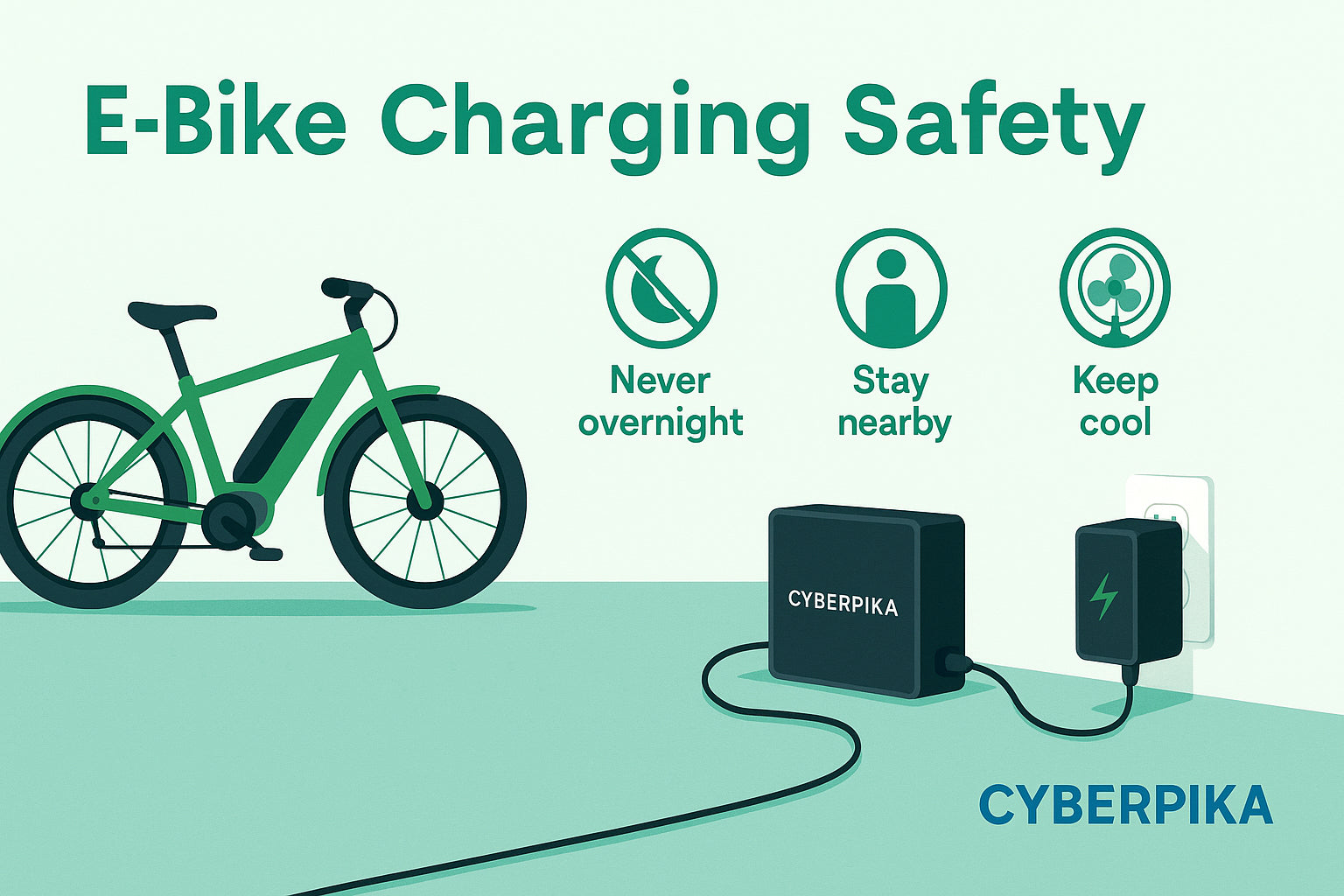Your e-bike is a source of joy, convenience, and adventure, but like any electronic device, it requires careful handling—especially when it comes to charging. While e-bike battery fires are rare, they are almost always preventable and often caused by simple mistakes.
Think of e-bike charging safety not as a chore, but as an essential part of being a responsible e-bike owner. By following a few simple, common-sense guidelines, you can ensure your battery stays healthy and your home stays safe. It’s all about creating a smart, safe charging routine.
Let's break down the essential do’s and don’ts for charging your e-bike battery at home.
The Absolute Do's of E-Bike Charging
These are the rules you should never compromise on. They are the single most effective way to prevent accidents and protect your investment.
- DO Use the Correct Charger. This is the number one rule of e-bike safety. Always use the charger that was specifically supplied with your e-bike or one that is a certified, manufacturer-approved replacement. Never use a generic, third-party charger, even if the plug fits. An incorrect charger can provide the wrong voltage or current, leading to overheating, damage, or fire.
- DO Charge in a Safe Location. Find a charging spot that is on a hard, non-combustible surface like concrete, tile, or stone. Your garage or a utility room is often a great choice. Ensure the area is well-ventilated and away from anything flammable, such as curtains, paper, carpets, or bedding.
- DO Be Present and Attentive. The most dangerous charging incidents often happen when a battery is left to charge unattended or, even worse, overnight while you are sleeping. Stay close by and check on the charging process periodically. Unplug the battery once it's full.
- DO Inspect Your Battery Regularly. Make it a habit to quickly check your battery and charger for any signs of damage before you plug them in. Look for signs of trouble such as:
-
- Swelling or bulging of the battery case
- Cracks, dents, or other physical damage
- Unusual or strong odors
- Hissing or popping sounds
- Excessive heat during charging
- Any signs of leaking If you notice any of these, stop using the battery immediately and contact the manufacturer or a professional repair shop.
- DO Let Your Battery Cool Down. After a long or vigorous ride, your battery will be warm. Plugging a warm battery into a charger puts unnecessary stress on the cells. Give your battery at least 15-30 minutes to cool down to room temperature before you begin charging.
- DO Use a Working Smoke Alarm. It's a simple, proactive step. If you charge your e-bike in a garage or shed, ensure there is a working smoke alarm installed in that area.
The Absolute Don'ts of E-Bike Charging
These are the habits and practices you should actively avoid to minimize risk.
- DON’T Charge a Damaged Battery. Never attempt to charge a battery that has been dropped, crashed, or shows any signs of external damage. Even a small crack can compromise the internal components and make it unsafe.
- DON’T Charge Overnight. This is the number one cause of e-bike charging fires. While you are sleeping, you can't monitor the process or react to an issue. Unplugging the charger once the battery is full also helps prevent overcharging, which can degrade the battery over time.
- DON’T Charge on or Near Flammable Surfaces. Avoid charging your battery on the couch, your bed, or even on a rug. The heat generated during charging needs a hard, flat surface to dissipate properly.
- DON’T Use an Extension Cord or Overloaded Outlet. For the safest and most efficient charge, plug your e-bike charger directly into a wall outlet. Many extension cords and power strips are not rated for the power draw of an e-bike charger and can overheat, leading to a fire.
- DON’T Leave Your E-Bike in the Way of an Escape Route. Never store or charge your e-bike in a hallway, near a door, or in any area that would block an exit from your home. In the unlikely event of an emergency, you need to have a clear path out.
- DON’T Expose Your Battery to Extreme Temperatures. Avoid charging your e-bike in direct sunlight, in an unheated garage during winter, or in an area that gets extremely hot. Both very hot and very cold temperatures can negatively affect the charging process and harm the battery.
Conclusion: Charge Smart, Ride Safe
Charging your e-bike battery isn't a high-risk activity when done correctly. By simply following these essential do's and don'ts, you are taking a proactive approach to protecting your home, your investment, and your loved ones. A little bit of attention to detail and a commitment to these common-sense safety rules will ensure that your e-bike remains a source of endless enjoyment for years to come.


Share:
Money-Wasting Myths, Debunked: Smart Habits for E-Bike Owners
Temperature Matters: Charge Your Battery in the Goldilocks Zone (10–30°C)